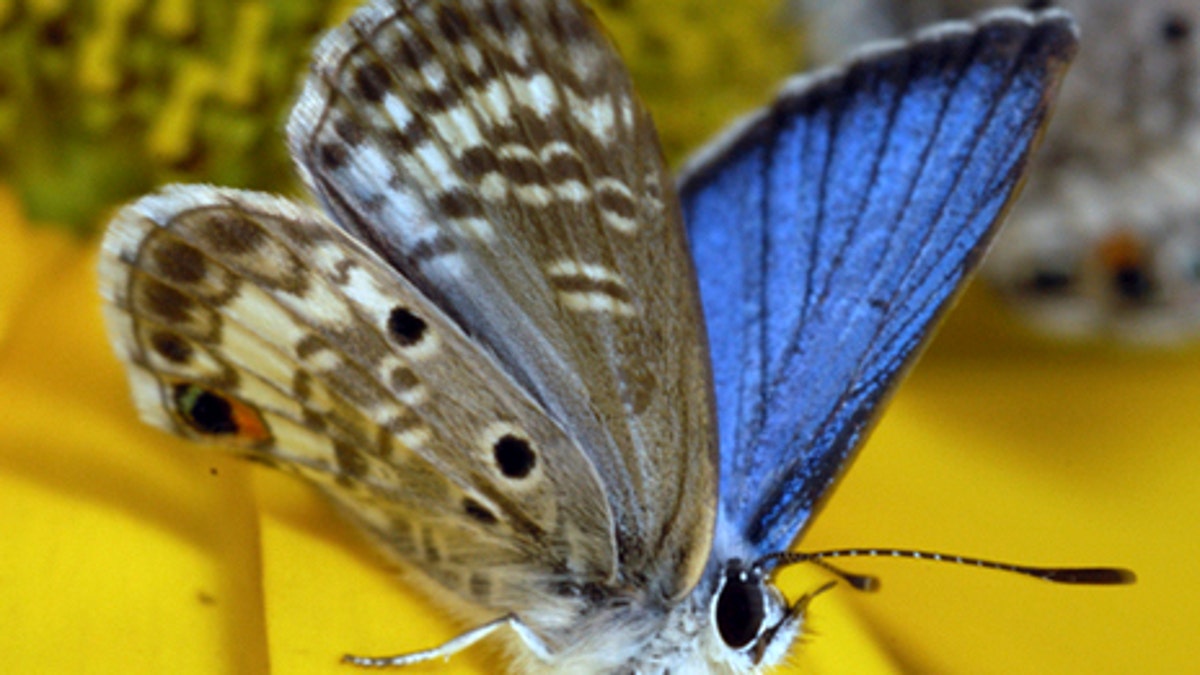
KEY LARGO, Fla. – For the first time in almost a decade, a rare and endangered butterfly is flying in the main stretch of the Florida Keys, once again defying the hurricanes and habitat loss that had brought it to the brink of extinction.
Researchers hope the Miami blue butterfly — a delicate creature with a wingspan about as wide as an adult's thumb — can find a way to thrive in a fragile environment that needed extensive restoration after Hurricane Irma's landfall with 130-mph (210-kph) winds last September.
"It is very tenuous, and all you can do is keep plugging away," said Jaret Daniels, director of the McGuire Center for Lepidoptera and Biodiversity at the Florida Museum of Natural History at the University of Florida.
The Miami blue is one of two federally protected butterflies released in the island chain this week as part of a project aimed at increasing their numbers in the wild and expanding their ranges. The releases were delayed almost a year because of damage left behind by Irma.
Daniels led a team of researchers placing about 150 dark blue, bean-sized chrysalises, protected from predators by plastic tubes, near grey nickerbean and blackbead plants in Long Key State Park on Tuesday. The first butterflies emerged from their protective tubes Wednesday.
"A kind of big whoo-hoo went up" when the first photograph of a Miami blue flying in the Layton park arrived in the lab, Daniels said.
The Miami blue was once common in coastal areas from the Keys north to Tampa Bay and Cape Canaveral, until development eliminated its habitat. It was feared extinct after Hurricane Andrew ravaged South Florida in 1992, until two isolated populations were rediscovered in the Keys.
Unfortunately, one of those populations was in a state park that around 2009 became infested with invasive iguanas that ate the plants where the butterfly laid its eggs. Before Tuesday, the only wild population survived on a remote island off Key West.
"They're down to kind of all the eggs in one basket, so to speak," Daniels said. "If we can expand the range and significantly increase the numbers, it will have much more flexibility to persist for years to come. Now it's so restricted in range and numbers that it doesn't have the flexibility to deal with tropical storms or hurricanes or other disturbances."
Hundreds of chubby caterpillars of another endangered butterfly, Schaus' swattowtail, were hooked onto the leafy branches of wild lime trees Monday in John Pennekamp Coral Reef State Park. Researchers hope they will survive predators such as birds and lizards, as well as tropical storms, to grow into butterflies with bright yellow-and-brown stained-glass patterns and 5-inch wingspans.
Schaus' swallowtails historically lived in tropical hardwood hammocks from Miami south into the Keys, but their population crashed as droughts desiccated their remaining habitat. By 2012, only four were spotted in the wild, and a last-ditch captive breeding program began in Daniels' lab in Gainesville.
Hundreds of lab-bred butterflies and caterpillars were released in Biscayne National Park, and several years later, researchers say those populations have significantly increased and appear sustainable.
Biologists from the university, Florida's Department of the Environmental Protection and the U.S. Fish and Wildlife Service participated in the releases. Lab-raised adult butterflies of both species will be released in the Keys in the coming months.
The butterflies are among the rarest insects in North America, and they face daunting challenges even in parks protecting their habitat: They live on low-lying islands prone to rising sea levels, storm surge flooding, fierce hurricane winds, droughts and invasive predators.
"All butterflies are food for other organisms in one life stage or another. They pollinate flowers. They have a lot of impact on the environment as a group," Daniels said. "But if they're gone, they're gone."









































